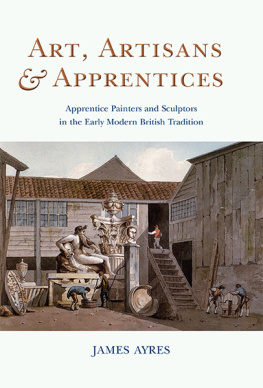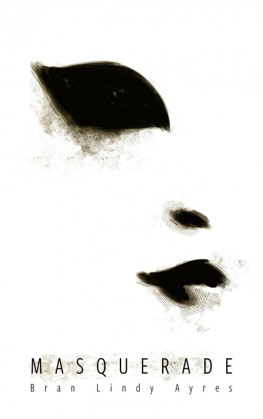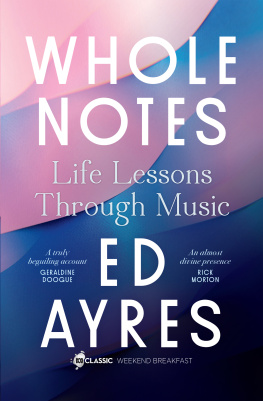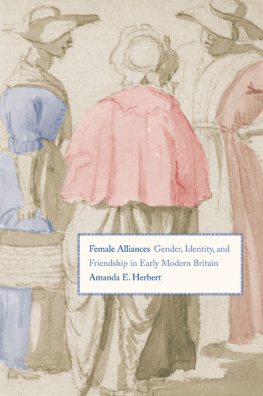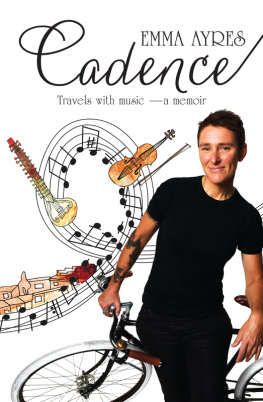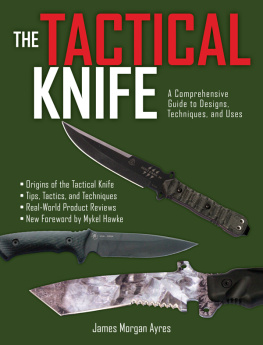Ayres - Art, Artisans and Apprentices
Here you can read online Ayres - Art, Artisans and Apprentices full text of the book (entire story) in english for free. Download pdf and epub, get meaning, cover and reviews about this ebook. year: 2014, publisher: Oxbow Books, genre: Religion. Description of the work, (preface) as well as reviews are available. Best literature library LitArk.com created for fans of good reading and offers a wide selection of genres:
Romance novel
Science fiction
Adventure
Detective
Science
History
Home and family
Prose
Art
Politics
Computer
Non-fiction
Religion
Business
Children
Humor
Choose a favorite category and find really read worthwhile books. Enjoy immersion in the world of imagination, feel the emotions of the characters or learn something new for yourself, make an fascinating discovery.
Art, Artisans and Apprentices: summary, description and annotation
We offer to read an annotation, description, summary or preface (depends on what the author of the book "Art, Artisans and Apprentices" wrote himself). If you haven't found the necessary information about the book — write in the comments, we will try to find it.
Ayres: author's other books
Who wrote Art, Artisans and Apprentices? Find out the surname, the name of the author of the book and a list of all author's works by series.
Art, Artisans and Apprentices — read online for free the complete book (whole text) full work
Below is the text of the book, divided by pages. System saving the place of the last page read, allows you to conveniently read the book "Art, Artisans and Apprentices" online for free, without having to search again every time where you left off. Put a bookmark, and you can go to the page where you finished reading at any time.
Font size:
Interval:
Bookmark:
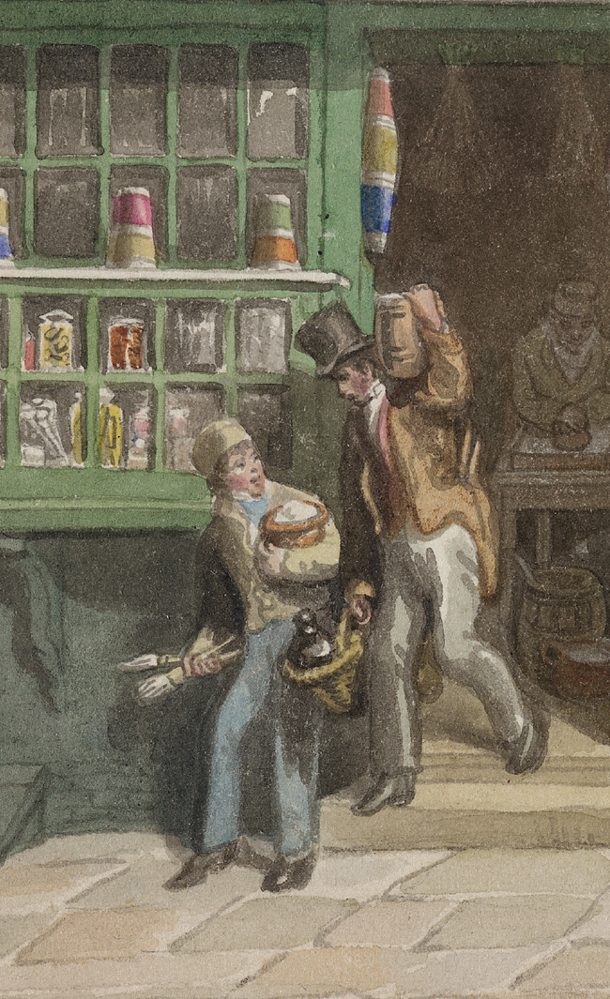
George Scharf detail of showing a young apprentice leaving a colourmans shop with his master. Within the shop, faintly visible through the open door, an apprentice may be seen grinding pigment.
Published in the United Kingdom in 2014 by
OXBOW BOOKS
10 Hythe Bridge Street, Oxford OX1 2EW
and in the United States by
OXBOW BOOKS
908 Darby Road, Havertown, PA 19083
James Ayres 2014
Hardcover Edition: ISBN 978-1-78297-742-1
Digital Edition: ISBN 978-1-78297-743-8; Mobi: ISBN 978-1-78297-744-5;
PDF: ISBN 978-1-78297-745-2
A CIP record for this book is available from the British Library
Library of Congress Cataloging-in-Publication Data
Ayres, James.
Art, artisans and apprentices : apprentice painters & sculptors in the early modern
British tradition / James Ayres.
1 online resource.
Includes bibliographical references and index.
Description based on print version record and CIP data provided by publisher; resource
not viewed.
ISBN 978-1-78297-743-8 (epub) -- ISBN 978-1-78297-744-5 (mobi (kindle)) -- ISBN
978-1-78297-745-2 ( pdf) -- ISBN ) 978-1-78297-742-1 1. Art--Study and teaching--Great
Britain--History--18th century. 2. Art--Study and teaching--North America--History--18th
century. 3. Painters--Training of--Great Britain--History--18th century. 4. Painters--Training
of--North America--History--18th century. 5. Sculptors--Training of--Great Britain--History
-18th century. 6. Sculptors--Training of--North America--History--18th century. 7. Great
Britain--Social conditions--18th century. 8. North America--Social conditions--18th century.
I. Title.
N185
707.155--dc23
2014020293
All rights reserved. No part of this book may be reproduced or transmitted in any form
or by any means, electronic or mechanical including photocopying, recording or by
any information storage and retrieval system, without permission from the publisher in
writing.
Printed in the United Kingdom by Berforts Information Press
For a complete list of Oxbow titles, please contact:
| United Kingdom | United States of America |
| Oxbow Books | Oxbow Books |
| Telephone (01865) 241249, Fax (01865) 794449 | Telephone (800) 791-9354, Fax (610) 853-9146 |
| Email: | Email: |
| www.oxbowbooks.com | www.casemateacademic.com/oxbow |
Oxbow Books is part of the Casemate Group
CONTENTS
INTRODUCTION
B iographies of Early Modern painters and sculptors in Britain and Colonial America show that whilst some individuals were articled to a successful studio many, perhaps most, were apprenticed to a particular trade of varying degrees of relevance. In general these lives of the artists touch on matters of training before moving on to what are perceived to be the substantive concerns in the life and work under review. Understandable though this position may be the brevity of information on training too easily gives insufficient importance to an historical reality. Before the full emergence of schools of art, an apprenticeship in a trade with some aesthetic values provided an important means to an end for those who had artistic aspirations or were to develop them.
For individuals who escaped the limitations of an exclusively trade training their workshop experience, when transferred to a studio, equipped them to realise their artistic aspirations. Many of the founder members of the Royal Academy of Arts in London sprang from such a background. One such was the first, and sadly the last, Royal Academician to serve as that institutions house painter (see ). Such a direct line, between the trade and the art, was a feature that gave that body a vitality, in its early years, that it has never quite recaptured.
This is a sprawling subject which I shall endeavour to centre on the very long eighteenth century (at its most extended c. 16601837) but which will be reviewed in terms of what preceded and succeeded it. For example, the high standard of craftsmanship that characterise the material culture of Georgian Britain had its origins in the apprenticeship system which stemmed from the medieval guilds. The decline in that method of training coincided with, or maybe attributed to, the rise of consumerism, industrialisation and the emergence of Empire: an age of both evolution and revolution.
Beyond, or rather within, the wider historical context the principal concern of the chapters that follow are the particulars of each of a given series of crafts. In these accounts consideration will be given to tools and materials, the nature and length of apprenticeships and the extent to which a tyro was expected to produce a proof piece or masterpiece at the conclusion of his time. As a craft history rather than an art history the emphasis will be on the processes rather than the products. Not that the intention is to produce a manual in the exact meaning of that word. On the contrary, the focus will be on the nature of the training in different crafts as reflected in the skills that they involved. From that starting point the way in which some tradesmen evolved into sculptors and painters will be considered.
Down to the third quarter of the seventeenth century there was little distinction between the so-called fine and decorative arts. Even so the evolution from artisan to artist could stem from the restrictive practices of a given craft or from some admissible relaxations of such regulations. Why, and for what reasons, were plumbers to be permitted by Guild authority to apply oil paint and how did some members of that craft emerge as easel painters? How was it that plasterers became entitled to apply lime-wash and distempers and, in some instances, become mural painters? What was the motivation that persuaded some woodcarvers to transfer their allegiance to marble? In what ways did some chasers inform the wider artistic community?
The crafts of the visual arts, in common with other trades in general, were regulated in major urban centres by the guilds or livery companies. These fraternities were at their most specialist and powerful in the City of London. For this reason the reach and influence of the capital was formidable and extended across the Atlantic. The crafts, like the arts, were inevitably and indelibly metropolitan urbanity was, by definition, urban. In Britain this was mitigated by the custom amongst the aristocracy and gentry of spending only the season in town. Much of the year was spent in country houses where the elite became ambassadors of sophistication. A comparable situation obtained in the North American Colonies. In the Old South individual plantations were equipped with wharfs from which tobacco, indigo and cotton were exported direct to Britain and to which the latest fashionable goods from London, Bristol and Liverpool were imported.
In representing special interest groups the guilds were therefore at their most powerful in the larger towns and cities. For this reason many of the craft fraternities emerged in association with the urbanisation on which they were dependent. In England the first challenge to guild authority occurred in early Tudor London. It was then that Italian Renaissance artists reached these shores at the behest of the king a situation that left guild members as impotent onlookers. Although the gradual decline of these fraternities as trade organisations did not begin until the seventeenth century their wavering authority was to have a deleterious impact on apprenticeships as a system of training.
The number of craft trades involved in the visual arts was legion. The range and extent of training that was expected, demanded and met was truly remarkable. Although we may too easily presume an understanding of the activities that constitute painting we are less familiar with the staining of cloths and transparencies or the defining nature of limning. Similarly sculpture once possessed an exact meaning in which die-sinkers, gem engravers and chasers occupied an honourable position. The understanding of these crafts in the visual arts receded as training in an apprenticeship was displaced by education in an art school. All these issues were to have an impact not only on artists but on the work that they produced. In this sequence of events artisans become affiliated to the Combinations (proto-Trade Unions) as artists aspired to a professional status under the diktats of academies.
Next pageFont size:
Interval:
Bookmark:
Similar books «Art, Artisans and Apprentices»
Look at similar books to Art, Artisans and Apprentices. We have selected literature similar in name and meaning in the hope of providing readers with more options to find new, interesting, not yet read works.
Discussion, reviews of the book Art, Artisans and Apprentices and just readers' own opinions. Leave your comments, write what you think about the work, its meaning or the main characters. Specify what exactly you liked and what you didn't like, and why you think so.

